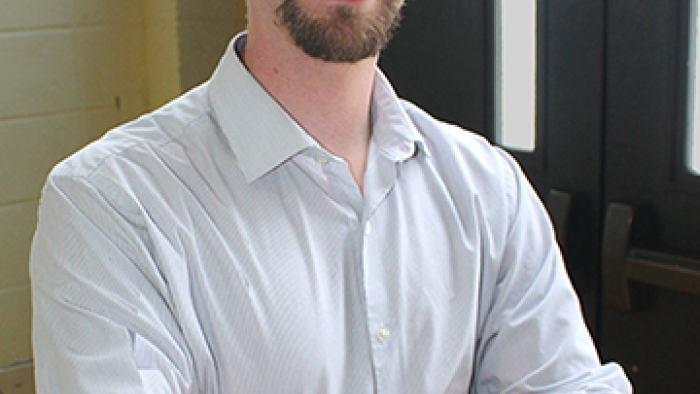
At a glance
 While working with theoretical computations, Physical and Life Sciences Assistant Professor Scott Simpson noticed that copper interacted with an organic molecule called p-benzoquinonemonoimine in a different way compared to some other metals. This led to a hypothesis that copper actually strengthens the bonds of the molecule.
While working with theoretical computations, Physical and Life Sciences Assistant Professor Scott Simpson noticed that copper interacted with an organic molecule called p-benzoquinonemonoimine in a different way compared to some other metals. This led to a hypothesis that copper actually strengthens the bonds of the molecule.

 Until it is properly researched and proven, a theory has two ultimate conclusions, like the flip of a coin for winning or losing. And in this case it would be the flip of a copper penny.
Until it is properly researched and proven, a theory has two ultimate conclusions, like the flip of a coin for winning or losing. And in this case it would be the flip of a copper penny.
While working with theoretical computations, Physical and Life Sciences Assistant Professor Scott Simpson noticed that copper interacted with an organic molecule called p-benzoquinonemonoimine in a different way compared to some other metals. This led to a hypothesis that copper actually strengthens the bonds of the molecule. This is quite unusual, as bonds typically weaken upon interaction with a metal surface.
“When I ran the numbers, I noticed something strange with copper, and quite frankly my first reaction was that the calculations must be in error, so of course I ran them again,” stated Simpson. “As I looked at the data closer, I came to theorize that something special must be happening here that you don’t see with other coinage metals. This intrigued me and some of my colleagues to research it further.”
Simpson and his colleagues are published in the periodic Journal of Physical Chemistry. Their finding can be valuable in the field of synthetic chemistry which is the formation of complex compounds by uniting simpler ones. Understanding the unique ways that molecules adhere to the surface of metals can lead to new production methods for synthetic compounds.
A native of Allegany, Simpson sees Alfred State as a way of coming home and inspiring another generation of students. “Synthetic chemistry is used, for example, in the creation of new pharmaceutical drugs and in this arena, changing one or two atoms can be the difference between life and death when introduced into the human body. I teach my students how understanding chemistry can open their eyes. I remember how chemistry class gave me lots of those ‘Aha!’ moments, which still motivate me to this day.”
Simpson is cited as the lead author of the article entitled "Modulating Bond Lengths via Backdonation." Additional authors include James Hooper of Jagiellonian University in Poland, Daniel P. Miller and Eva Zurek with the State University of New York at Buffalo, and Danna A. Kunkel and Axel Enders from the University of Nebraska. This is the seventh occasion for Simpson's work to be published in the ACS Journal of Physical Chemistry. Simpson earned his bachelor’s degree at SUNY Fredonia and PhD at the State University of New York at Buffalo before joining the faculty at Alfred State.
